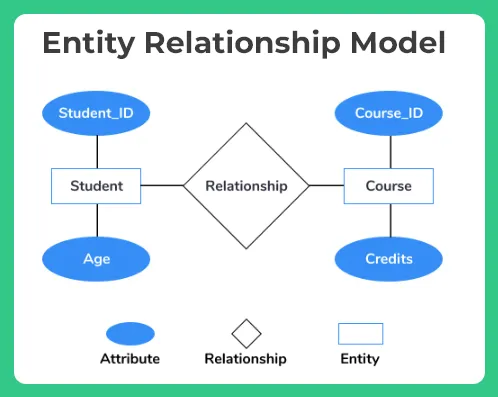Entity Relationship Model (ER model) in DBMS
ER Model in DBMS
In DBMS, the entity-relationship (ER) model is a way of representing data in a conceptual view. It is used to design and model a database and its components, such as entities, attributes, and relationships.
Entity-Relationship model (ER model)
- An effective system where data is organized into discrete categories called entities(different database tables)
ERmodelis an illustration of various entities in business and the relationship between them- It is built during the analysis phase of the system development life cycle
- The ER model separates the information required in the business i.e it establishes a clear distinction between data that is useful and not useful for business operations

Key components of the ER model
Entity :
It is a set of related information i.e nothing but a database table.
Attributes :
- It defines what type of data an entity is storing i.e different columns in a table
- For example, a student entity consists of student name, ID, marks as attributes
- An entity may contain any numbers of attribute but it must contain at least one attribute .
Relationships :
- It is defined as an association between entities links between different database tables for data accessing
- Several relationships may exist between the same entity basically 4 relationships are identified
- One to one
- One to many
- Many to one
- Many to many
- These relationships are nothing but the links between in a table to another table or set of tables so that data can be transferred and used from more than one table .
ER model benefits
- Provide a clear picture of the scope of information requirement
- Provides an easily understandable pictorial map for database design
- It offers an effective Framework for integrating multiple applications.
Prime Course Trailer
Related Banners
Get PrepInsta Prime & get Access to all 200+ courses offered by PrepInsta in One Subscription
Get over 200+ course One Subscription
Courses like AI/ML, Cloud Computing, Ethical Hacking, C, C++, Java, Python, DSA (All Languages), Competitive Coding (All Languages), TCS, Infosys, Wipro, Amazon, DBMS, SQL and others






Login/Signup to comment